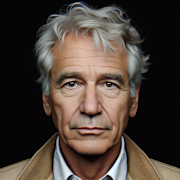The Silent Revolution: Rediscovering the Magic of Silent Cinema

Silent cinema, also known as silent film, refers to a captivating era in the history of filmmaking when movies were produced without synchronized sound. Although silent films may be considered ancient relics today, they hold a special place in the hearts of film enthusiasts and continue to fascinate audiences worldwide. This blog post aims to take you on a journey, exploring the enchanting world of silent cinema and why it remains a remarkable part of our cultural heritage.
The Birth of Silent Cinema: A Glimpse into History
The late 19th and early 20th centuries witnessed the birth and rise of cinema, and it was during this time that silent films carved their niche. The Lumière brothers’ 1895 invention of the cinematograph, a portable motion-picture camera, paved the way for the development of silent cinema.
A Silent Spectacle: The Evolution of Silent Films
In the early days of silent cinema, films were usually short, averaging around 10 to 20 minutes in duration. However, as the art form progressed, filmmakers began to experiment with different genres, enabling the birth of feature-length silent films. These films often entailed stunning visual storytelling and ingenious techniques to captivate audiences without dialogue or sound effects.
The Silent Language: Understanding Visual Storytelling
Silent cinema relied heavily on visual storytelling to convey emotions, ideas, and narratives. As dialogue was absent, filmmakers had to resort to creative visual techniques to engage their viewers. This section explores some essential elements of silent cinema:
Expression through Body Language
Actors in silent films mastered the art of non-verbal communication, relying on facial expressions, gestures, and body language to communicate a character’s emotions, intentions, and thoughts. The exaggerated mannerisms and expressive movements of silent film actors added an extra layer of charm to their performances, while conveying the subtleties of their characters.
Dynamic Title Cards
To compensate for the lack of spoken dialogue, silent films often employed title cards—brief intertitles displayed intermittently throughout the film. These cards provided essential dialogue, descriptions, or conveyed a character’s thoughts. Filmmakers skillfully integrated these title cards into the visual narrative, ensuring a smooth and immersive viewing experience.
Visual Symbolism and Metaphors
Silent films often employed intricate visual symbolism and metaphors to convey complex ideas and themes. Directors relied on clever visual motifs, such as recurring objects or specific framing techniques, to add depth and layers of meaning to their stories. The interpretation of these symbols varied from viewer to viewer, opening up discussions and debates long after the film ended.
Silent Cinema’s Enduring Influence
Although sound was eventually introduced to cinema in the late 1920s, silent films continue to inspire and impact modern filmmaking in various ways. This section highlights some of the silent cinema’s lasting contributions:
Visual Aesthetics
The stunning visual aesthetics of silent films laid the foundation for modern cinematography. The meticulous attention to composition, lighting, and camera movements in silent cinema influenced generations of filmmakers. Some iconic silent films, such as F.W. Murnau’s “Nosferatu” (1922) or Fritz Lang’s “Metropolis” (1927), still enchant viewers with their visually striking scenes and innovative techniques.
Emphasis on Soundtracks
While silent films lacked synchronized sound, they were often accompanied by live music performances. These musical accompaniments enhanced the emotional impact of the films, adding an extra layer of engagement for the audience. Today, silent films are frequently revitalized with modern soundtracks, showcasing how the power of music can elevate the storytelling experience and breathe new life into long-forgotten classics.
Paving the Way for Experimental Filmmaking
Silent cinema’s reliance on visual storytelling and creativity encouraged filmmakers to push the boundaries of traditional narrative structure. Directors such as Sergei Eisenstein and Friedrich Wilhelm Murnau employed innovative editing techniques and unconventional narratives, setting the stage for experimental filmmaking in the years to follow. Silent cinema demonstrated that films need not be constrained by the limitations of dialogue or sound.
Rediscovering Silent Cinema Today
In recent years, there has been a renewed interest in silent films, with restoration projects, film festivals, and online platforms making these treasures accessible to a wider audience. This resurgence allows us to appreciate the artistry and ingenuity of early filmmakers.
Embracing the Silence: Silent Cinema for the Modern Audience
Silent cinema holds a unique allure that transcends time, inviting audiences to step into a different era of storytelling. As we navigate our fast-paced, technology-driven world, taking the time to immerse ourselves in the beauty and simplicity of silent films presents a welcome escape.
Whether it’s through attending silent film screenings with live musical accompaniments or exploring online archives of restored classics, embracing silent cinema offers a chance to appreciate the birth of filmmaking as we know it, while discovering timeless stories that continue to captivate audiences of all ages.
So let us embark on this silent revolution, rediscovering the magic of silent cinema and celebrating the pioneers who paved the way for the cinematic marvels we enjoy today. Step into the past and embrace the whispers of the silver screen - an experience that will leave you mesmerized, enchanted, and reminded of the timeless power of visual storytelling.

Desmond van der Walt
Journalist
More From Classics Authority Movies

Movie
Cinematic Showdowns: Epic Battles in Classic Movie History

Movie
Army of Shadows (1969)

Movie
Cinematic Eccentrics: Quirky Characters That Stole the Show

Movie
Spotlight on Orson Welles: Maverick Filmmaker and Renaissance Man

Movie
Cinematic Alchemy: The Magic of Special Effects in Classic Movies

Movie
The Great Dictator (1940)





